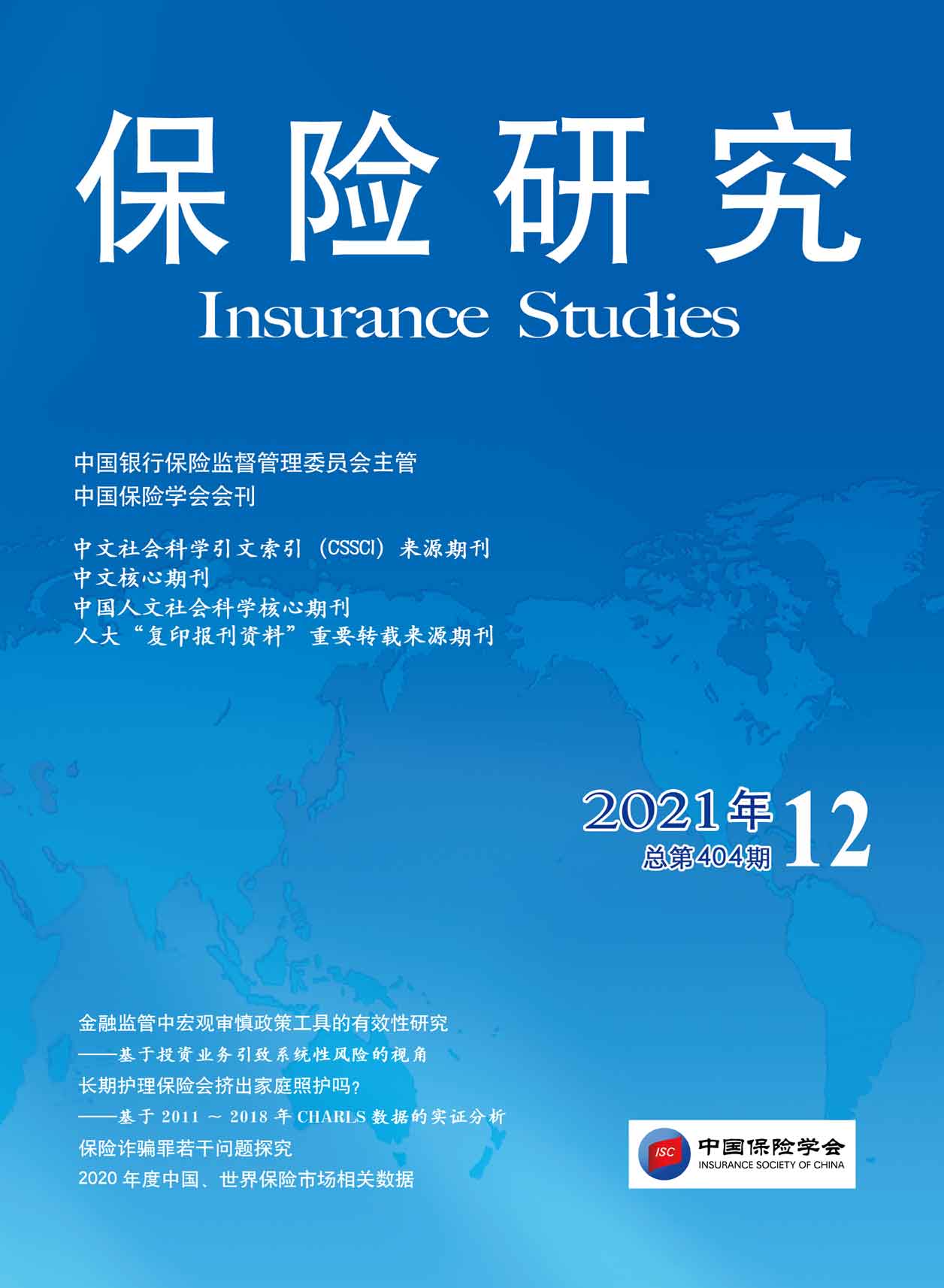
《保险研究》20210207-《后疫情时代失业保险基金可持续性与经济调节功能研究》(薛惠元、曹思远)
[中图分类号]F840.61 [文献标识码]A [文章编号]1004-3306(2021)02-0091-22 DOI:10.13497/j.cnki.is.2021.02.007
资源价格:30积分
- 内容介绍
[摘 要]本文在理论分析的基础上,通过构建我国失业保险基金精算模型对新冠肺炎疫情冲击后失业保险基金的可持续性和经济调节功能进行研究,并通过政策仿真研究不同政策参数对失业保险基金周期性平衡的影响。研究发现:第一,新冠肺炎疫情冲击后2020~2035年我国失业保险基金当期缺口均在90亿元及以上,其中2020年基金当期收不抵支问题严峻;第二,疫情冲击后2020~2025年基金累计结余不断减少且消耗速度较快,若无其他政策干预,2025年累计结余将耗尽;第三,由于失业保险阶段性“免、减、缓、返、补、扩”系列政策的出台,疫后失业保险制度的经济调节功能凸显,但仍存在改进空间;第四,费率、参保率、费基占比(实际缴费基数占应缴费基数的比重)的提高和城镇登记失业率的降低均能在一定程度上减少基金当期缺口,延缓基金累计结余耗尽时间,但只有参保率和费基占比的提高以及城镇登记失业率的降低才能促进基金经济调节功能的进一步发挥;第五,参保率、费基占比和城镇登记失业率三项政策参数的复合和综合变化能够放大其对基金周期性平衡的调节效应,在本文提供的四项政策组合中,最优可使2020~2035年仅存在6年当期缺口,基金累计结余耗尽时间推迟至2035年后。因此,建议继续扩大失业保险制度覆盖面、进一步夯实失业保险缴费基数、灵活调整失业保险金最长领取月数。
[关键词]新冠肺炎疫情;失业保险基金;可持续;经济调节功能
[基金项目]武汉大学抗击新冠肺炎疫情人文社会科学应急研究专项“新冠肺炎疫情对社会保障的影响及应对策略研究”(2020YJ050)。
[作者简介]薛惠元,武汉大学社会保障研究中心副主任、副教授、硕士生导师,研究方向:社会保险精算;曹思远(通讯作者),武汉大学社会保障研究中心硕士研究生,研究方向:社会保障理论与政策。
A Research on the Sustainability and Economic Adjustment Function of Unemployment Insurance Fund in the Post-COVID-19 Era
XUE Hui-yuan,CAO Si-yuan
Abstract:The Unemployment Insurance Fund (UIF) actuarial model was constructed to study the sustainability and economic adjustment function of the UIF in the wake of the COVID-19 based on the relevant theoretical analysis.Besides,the Paper also made a simulation study on the impact of different policy parameters on the periodic balance of the UIF.Conclusions are as follows.Firstly,the current gap of the UIF will be in the amount of 90 billion yuan and above from 2020 to 2035 considering the impact of the COVID-19,and the fund gap problem is quite serious in 2020.Secondly,during 2020 to 2025,the accumulated balance of the fund will decrease constantly and in a fast pace.If there is no other policy intervention,the accumulated balance will be depleted in 2025.Thirdly,the economic adjustment function of the unemployment insurance system will be improved with the introduction of the series of policies under the COVID-19 (contribution exemption,reduction,postponement,rebate,subsidy,etc.),but there will still be some room for improvement.Fourthly,the increase in the contribution rate,the participation rate and the proportion of contribution base (proportion of actual contribution base to payable contribution base) and the decrease of the Urban Registered Unemployment Rate (URUR) can reduce the current gap of the fund to a certain extent,and delay the depletion of the accumulated balance of the fund,but only the increase in the participation rate,the proportion of contribution base and the decrease in the URUR can enhance the fund′s economic adjustment function.Fifthly,the composite changes of the three policy parameters,namely,the participation rate,the proportion of contribution base and the URUR,can amplify its adjustment effect on the periodic balance of the fund.Among the four policy combinations offered by the paper,the optimal policy combination can contain the current gap of the fund to only 6 years during 2020-2035 and the depletion of the accumulated balance of the fund be postponed to later than 2035.Therefore,the paper recommended to further expand the coverage of the unemployment insurance system,further consolidate the contribution base of unemployment insurance,and flexibly adjust the longest number of months to receive unemployment insurance benefits.
Key words:COVID-19;unemployment insurance fund;sustainability;economic adjustment function

《保险研究》20211201-《金融监管中宏观审慎政策工具的有效性研究——基于投资业务引致系统性风险的视角》(邹奕格、粟芳)

《保险研究》20211202-《长期护理保险会挤出家庭照护吗?——基于2011~2018年CHARLS数据的实证分析》(朱铭来、何敏)

《保险研究》20211203-《参与农作物保险是否促进农户农地转入?——基于内蒙古的微观实证》(柴智慧)

《保险研究》20211204-《环境污染责任保险与企业环境信息披露》(李敏鑫、王江寒)

《保险研究》20211205-《保险诈骗罪若干问题探究》(曹顺明、杨润宇、赵瑛)

《保险研究》20211206-《<民法典>视野下保险合同第三人代缴保费问题研究》(王家骏)
